How long does a tuning fork ring?
 'Quantum-mechanics' solve a very classical problem.
'Quantum-mechanics' solve a very classical problem.
Mar 8th, 2011
Read more
 'Quantum-mechanics' solve a very classical problem.
'Quantum-mechanics' solve a very classical problem.
Mar 8th, 2011
Read moreNew multifocal plane microscopy method described today at 55th Biophysical Society Meeting in Baltimore.
Mar 8th, 2011
Read more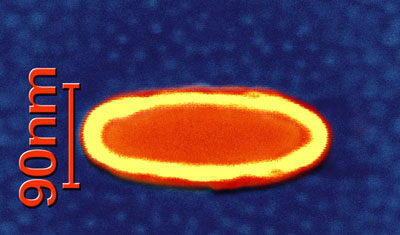 Patented PTB invention solves the problem of "magnetic ringing".
Patented PTB invention solves the problem of "magnetic ringing".
Mar 8th, 2011
Read moreThe leader of the CIC nanoGUNE nanodevices team received the prestigious award for scientific research, a Starting Grant of 1.3 million euros for the SPINTROS project. The European Research Council (ERC) concedes these grants to innovative and "risky" ideas at the frontier of knowledge and which, in the long term, can give rise to revolutionary developments and applications.
Mar 8th, 2011
Read moreThis textbook is targeted at the junior undergraduate level or as a reference text for advanced learners at pre-university and senior high school. It has evolved from the authors own teaching experience at tertiary institutions.
Mar 8th, 2011
Read moreTwo types of raw materials are currently used for biorefining and biofuel production: carbohydrates and lipids. Biofuels like ethanol are derived from carbohydrate raw materials such as sugars and lignocellulose, while biodiesels are derived from another raw material, lipid-rich vegetable oil.
Mar 8th, 2011
Read more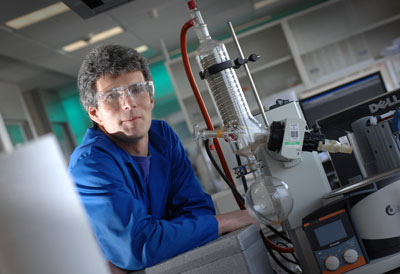 Graphene Oxide has had a scrum of researchers fall upon it as it retains much of the properties of the highly valued super material pure Graphene, but it is much easier, and cheaper, to make in bulk quantities; easier to process; and its significant oxygen content appears to make it soluble in water. However new research has found that that last assumption is incorrect and unfortunately Graphene oxide's solubility literally comes out in the wash.
Graphene Oxide has had a scrum of researchers fall upon it as it retains much of the properties of the highly valued super material pure Graphene, but it is much easier, and cheaper, to make in bulk quantities; easier to process; and its significant oxygen content appears to make it soluble in water. However new research has found that that last assumption is incorrect and unfortunately Graphene oxide's solubility literally comes out in the wash.
Mar 8th, 2011
Read more Matthew Tirrell, a pioneering researcher in the fields of biomolecular engineering and nanotechnology, has been appointed founding Pritzker Director of the University of Chicago's new Institute for Molecular Engineering, effective July 1. The institute, created in partnership with Argonne National Laboratory, will explore innovative technologies that address fundamental societal problems through modern advances in nanoscale manipulation and the ability to design at a molecular scale.
Matthew Tirrell, a pioneering researcher in the fields of biomolecular engineering and nanotechnology, has been appointed founding Pritzker Director of the University of Chicago's new Institute for Molecular Engineering, effective July 1. The institute, created in partnership with Argonne National Laboratory, will explore innovative technologies that address fundamental societal problems through modern advances in nanoscale manipulation and the ability to design at a molecular scale.
Mar 8th, 2011
Read more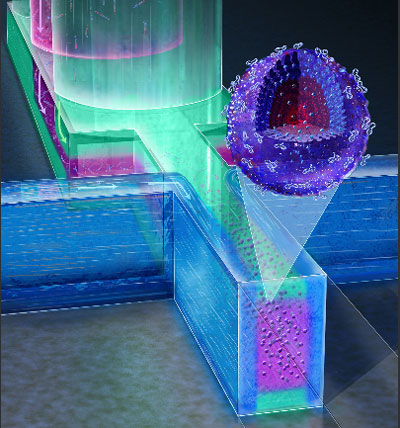 Researchers at MIT and Brigham and Women's Hospital have developed a new way to produce nanoparticles that can deliver drugs for cancer and other diseases. The new production system offers greater control over the size and composition of the particles, allowing large quantities of homogenous particles to be rapidly produced.
Researchers at MIT and Brigham and Women's Hospital have developed a new way to produce nanoparticles that can deliver drugs for cancer and other diseases. The new production system offers greater control over the size and composition of the particles, allowing large quantities of homogenous particles to be rapidly produced.
Mar 8th, 2011
Read moreHighlighting the challenges of developing micro- and nanosensors for the aerospace industry - Thursday 10th March, Bristol.
Mar 8th, 2011
Read more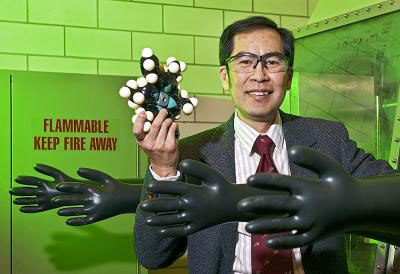 L. Keith Woo is searching for cleaner, greener chemical reactions. Woo, an Iowa State University professor of chemistry and an associate of the U.S. Department of Energy's Ames Laboratory, has studied catalysts and the chemical reactions they affect for more than 25 years. And these days, his focus is on green catalysis.
L. Keith Woo is searching for cleaner, greener chemical reactions. Woo, an Iowa State University professor of chemistry and an associate of the U.S. Department of Energy's Ames Laboratory, has studied catalysts and the chemical reactions they affect for more than 25 years. And these days, his focus is on green catalysis.
Mar 7th, 2011
Read more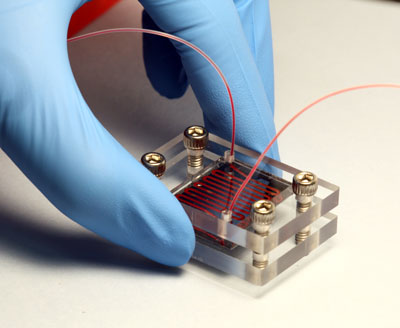 Circulating tumor cells, which play a crucial role in cancer metastasis, have been known to science for more than 100 years, and researchers have long endeavored to track and capture them. Now, a UCLA research team has developed an innovative device based on Velcro-like nanoscale technology to efficiently identify and "grab" these circulating tumor cells, or CTCs, in the blood.
Circulating tumor cells, which play a crucial role in cancer metastasis, have been known to science for more than 100 years, and researchers have long endeavored to track and capture them. Now, a UCLA research team has developed an innovative device based on Velcro-like nanoscale technology to efficiently identify and "grab" these circulating tumor cells, or CTCs, in the blood.
Mar 7th, 2011
Read more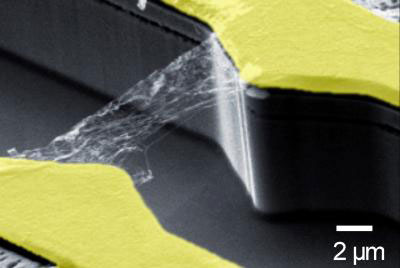 Carbon nanotubes have a multitude of unusual properties which make them promising candidates for optoelectronic components. However, so far it has proven extremely difficult to analyze or influence their optic and electronic properties. A team of researchers has now succeeded in developing a measurement method allowing a time-based resolution of the so-called photocurrent in photodetectors with picosecond precision.
Carbon nanotubes have a multitude of unusual properties which make them promising candidates for optoelectronic components. However, so far it has proven extremely difficult to analyze or influence their optic and electronic properties. A team of researchers has now succeeded in developing a measurement method allowing a time-based resolution of the so-called photocurrent in photodetectors with picosecond precision.
Mar 7th, 2011
Read moreJapanese researchers have been immersing iron-based compounds in hot alcoholic beverages such as red wine, sake and shochu to induce superconductivity.
Mar 7th, 2011
Read more The 365,000-square-foot building, designed by Cambridge-based architectural firm Ellenzweig, stretches along Main Street between Ames and Vassar streets, and houses 27 faculty labs and about 630 researchers.
The 365,000-square-foot building, designed by Cambridge-based architectural firm Ellenzweig, stretches along Main Street between Ames and Vassar streets, and houses 27 faculty labs and about 630 researchers.
Mar 7th, 2011
Read moreEnlarged partnership in III-V Lab will target applications in telecoms, industrial control, environmental testing, defense, security and space.
Mar 7th, 2011
Read more